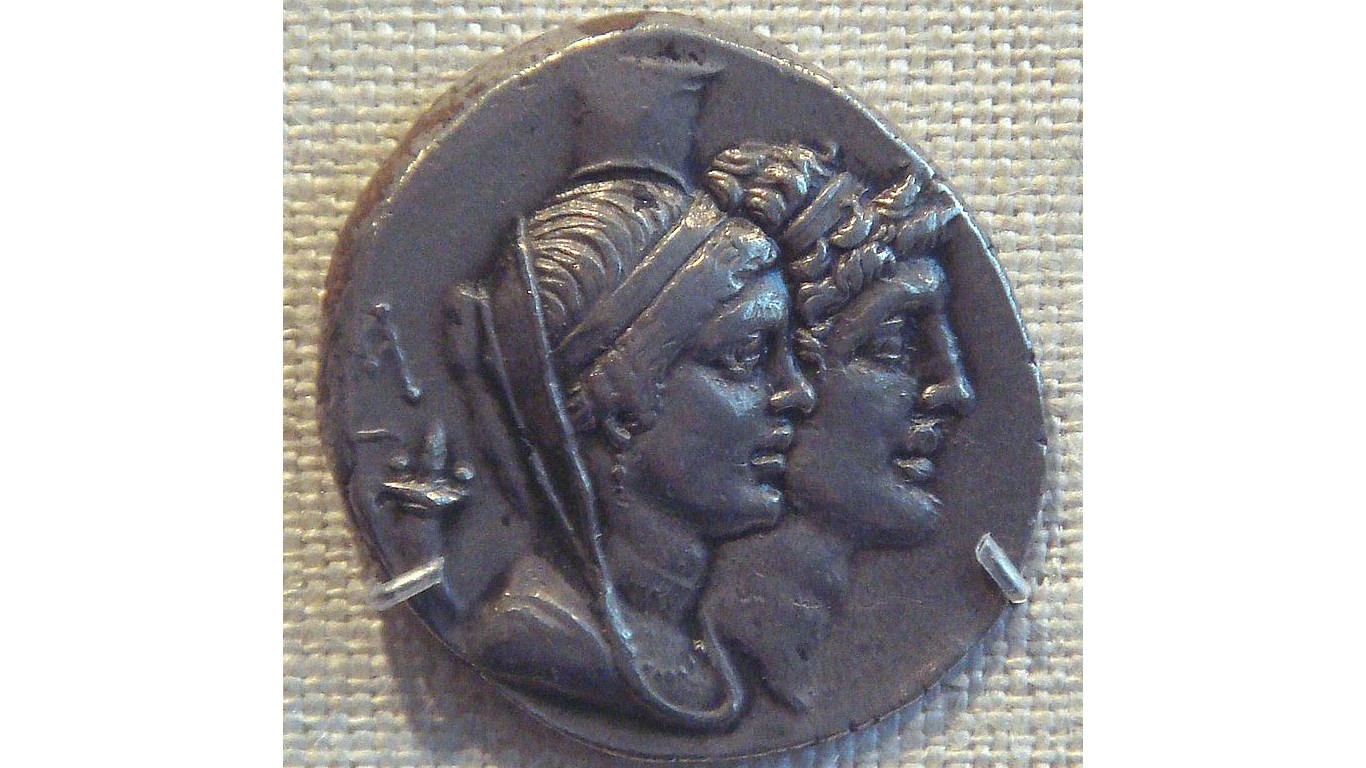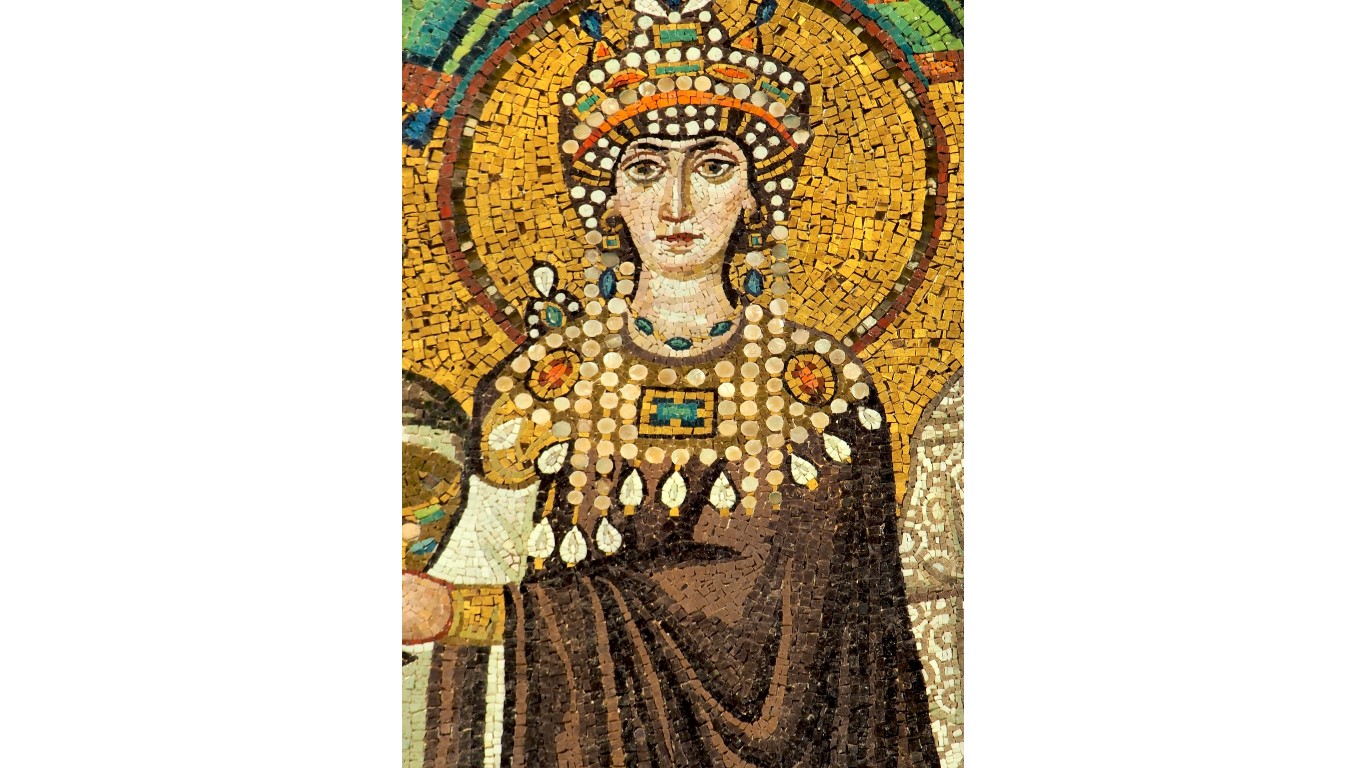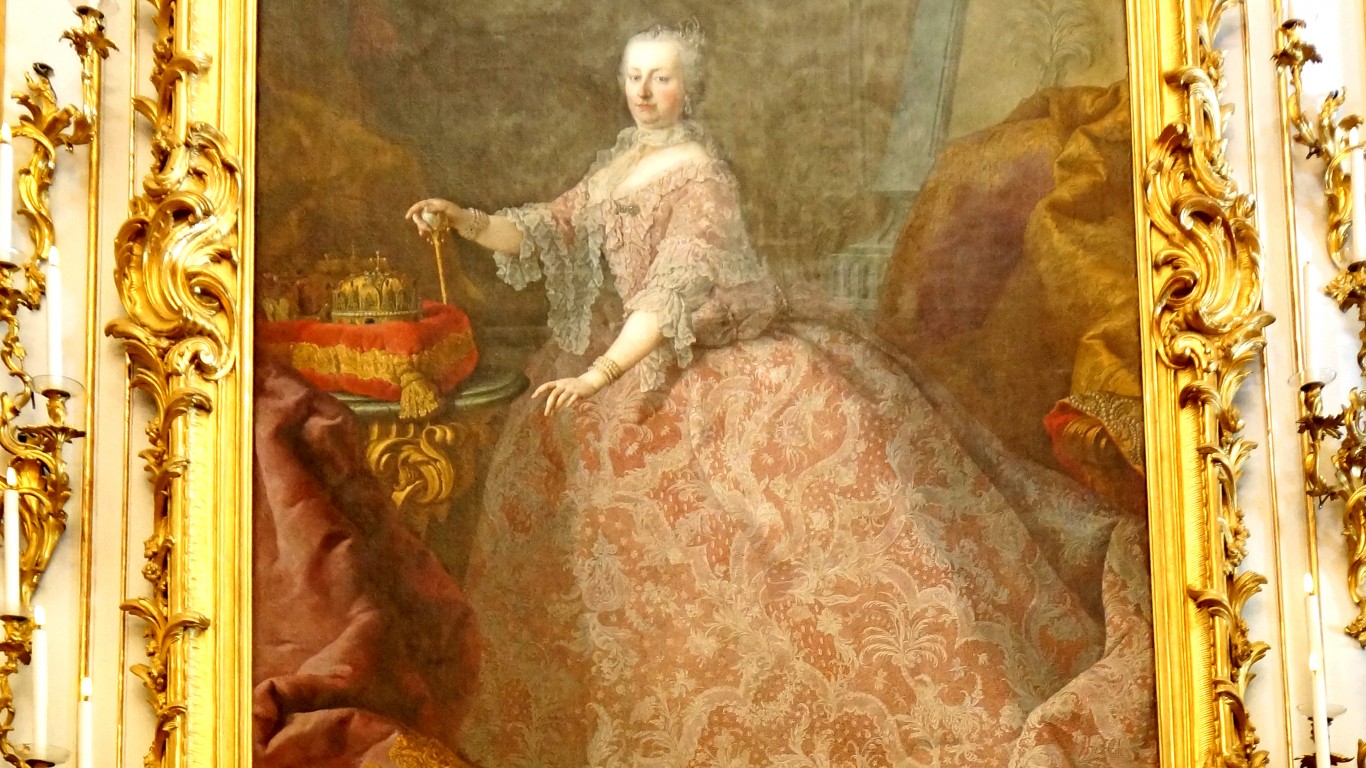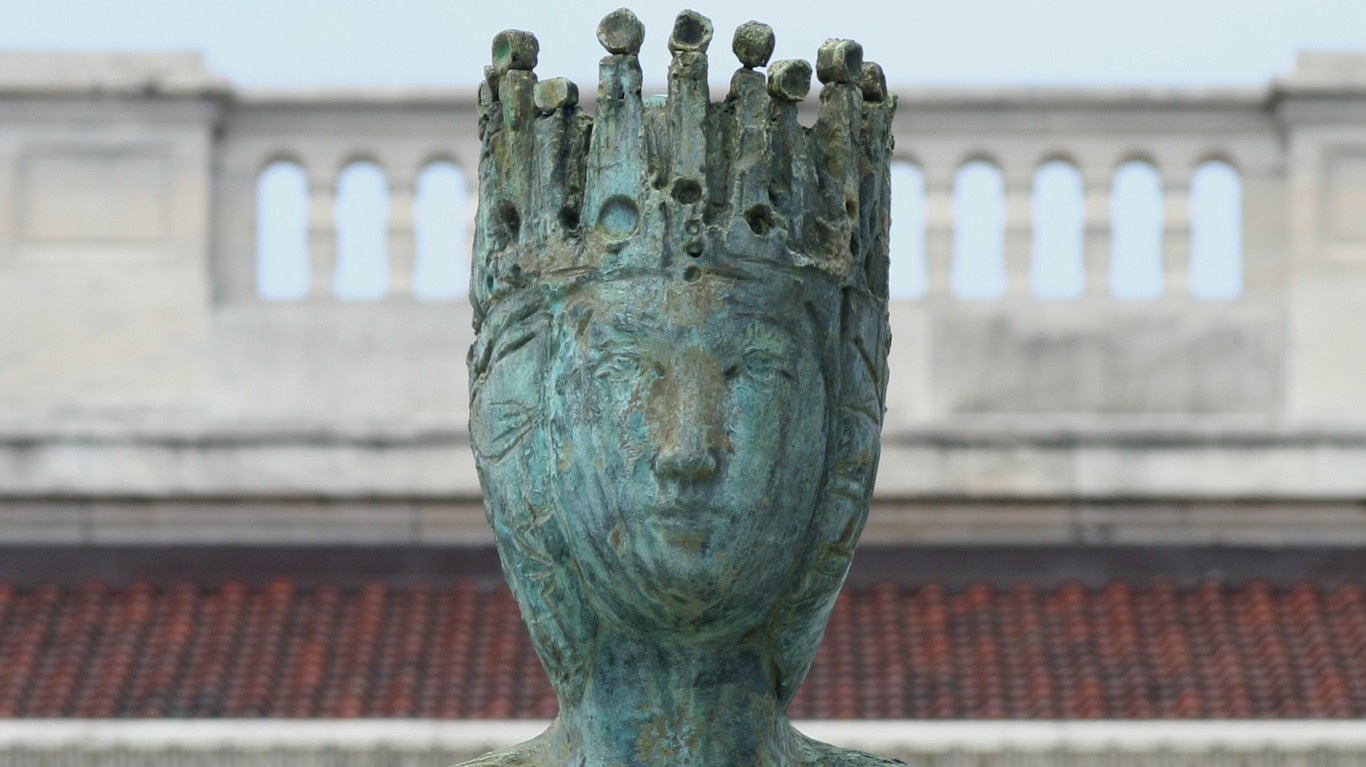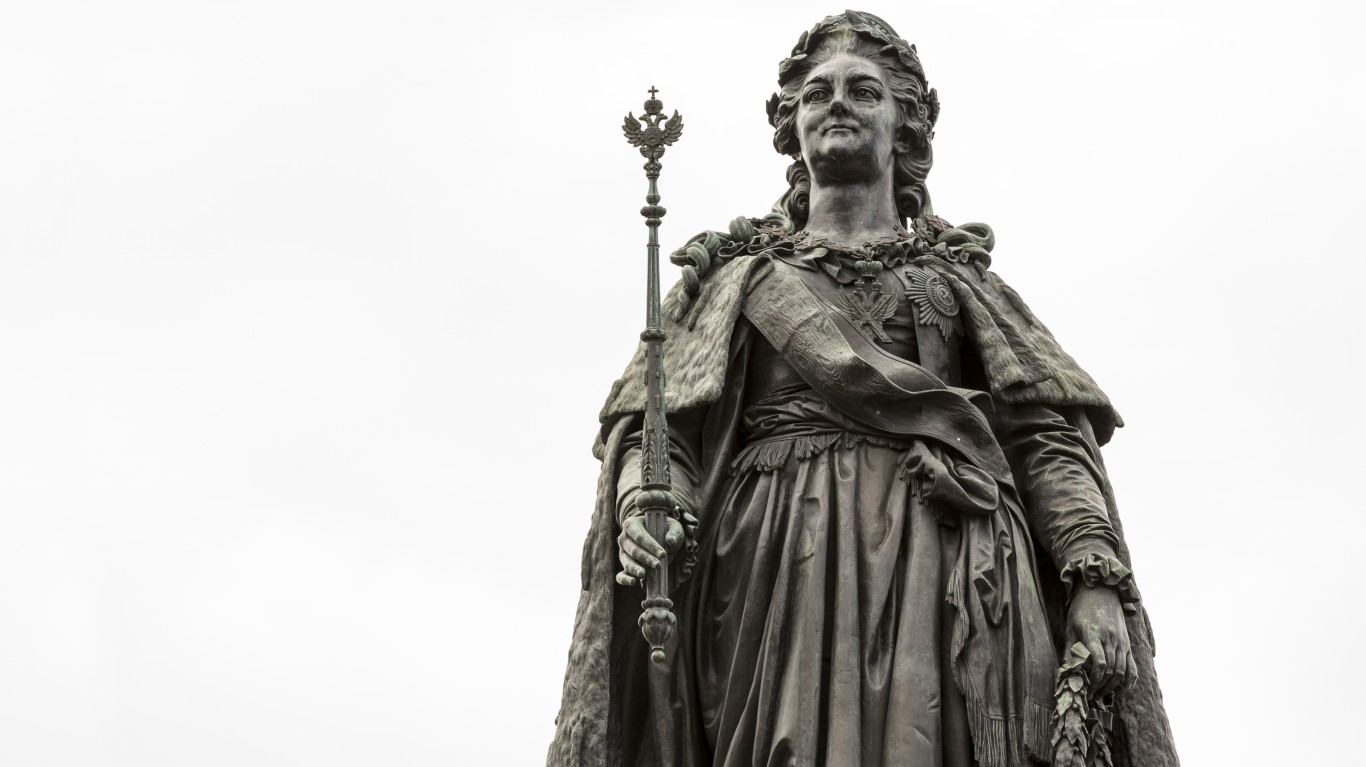
As far back as Mesopotamia and ancient Egypt, kings, believed to be divinely appointed, ruled society. Ancient monarchies and dynasties often bequeathed the crown patrilineally, or through male heirs. Only when a king or emperor had no male heir was a daughter begrudgingly considered to take the throne. Throughout history, women have faced tremendous barriers to wielding power, especially in high government positions. (Here are women who broke barriers every year since 1950).
Even when a woman managed to ascend to a role as empress or queen regnant (ruling monarch), she often had to work double time to gain the respect that a king might automatically be granted. Some female leaders were murdered by male relatives, including their own sons, who wished to seize power. Others were locked up or exiled to allow a man to regain control.
Despite these odds, occasionally throughout history women have managed to become the acknowledged heads of tribes, nations, or empires. 24/7 Tempo has compiled a list of 26 of these powerful female rulers by reviewing numerous articles from sources including History and Britannica to find queens and empresses with the most renown and/or significant accomplishments.
Only rulers whose reign began prior to the 20th century were included, which accounts for the absence of such key figures as Queen Elizabeth II, Indira Gandhi, Margaret Thatcher, and Angela Merkel — all as powerful or influential in a contemporary context as any ancient empress. (These are the most important events in the life of Queen Elizabeth in every year of her reign.)
Click here to see the most famous female rulers in history
Many of the women on this list ruled as regents for sons who were too young to take the throne, in some cases maintaining power even after their offspring came of age. Some notable wives of kings (queen consorts, who don’t officially have the regal powers granted to queen regnants) whose powers and policies strongly augmented or overshadowed those of their husbands have been included. Although a few of these women are remembered for bloody acts of vengeance or persecution, others left a legacy of intellectual and artistic patronage.
Merneith
> Ruled over: Egypt
> Reign: circa 2950 B.C.
Merneith may be the first female monarch in recorded history. She likely ruled as regent for her son until he succeeded her. Not much is known about her reign, but it is assumed that she took the throne upon the death of her husband, Djet, the fourth pharaoh of Egypt’s First Dynasty. Her tomb in Abydos — the only woman’s tomb among the tombs of other pharaohs — contained a funerary boat as well as the graves of dozens of servants who were buried alongside her.
[in-text-ad]
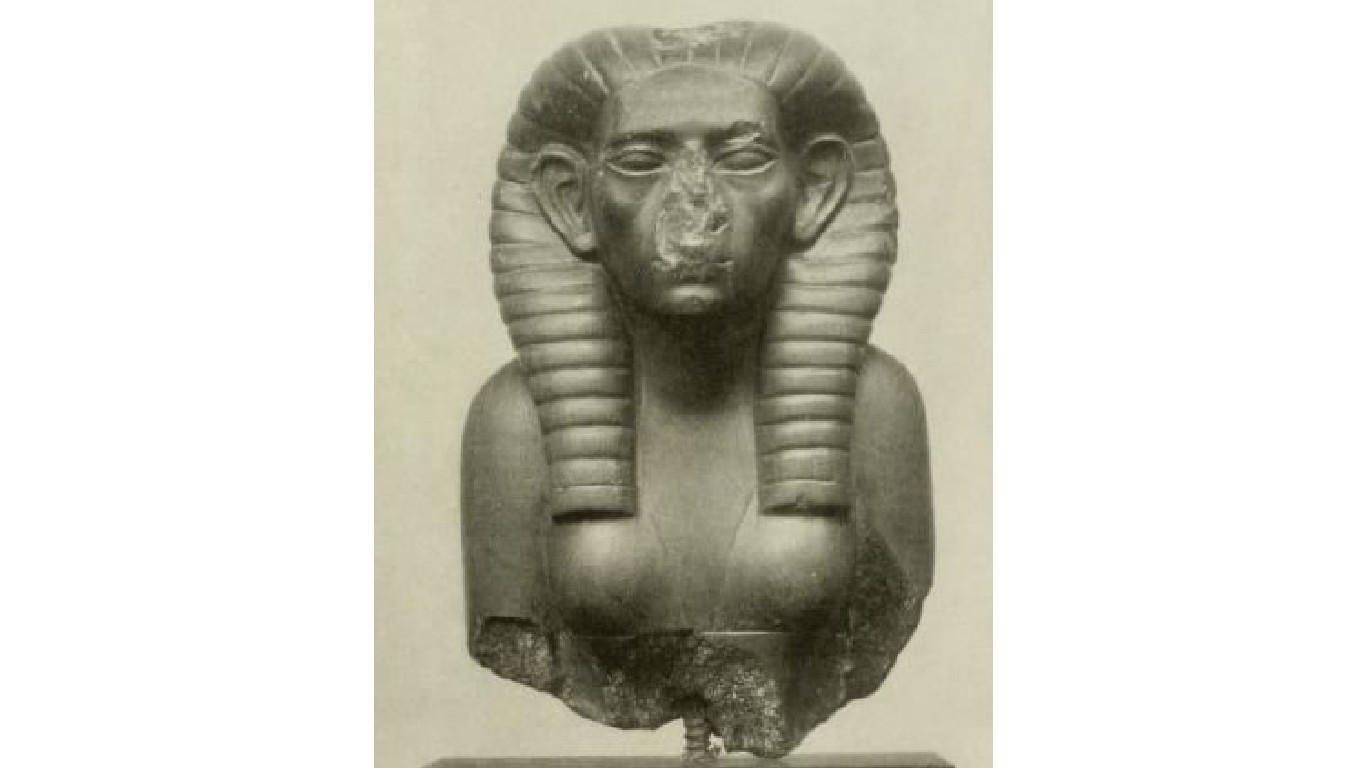
Sobekneferu
> Ruled over: Egypt
> Reign: 1760-1756 B.C.
The last ruler of the 12th Dynasty of Egypt, Sobekneferu assumed the throne when her half-brother, Amenemhet IV, died leaving no male heir. She was the first female pharaoh to receive full royal titulary and was accepted as ruler in official records. A few statues remain from her reign, displaying her feminine features but in king’s regalia, striking traditional pharaoh’s poses.
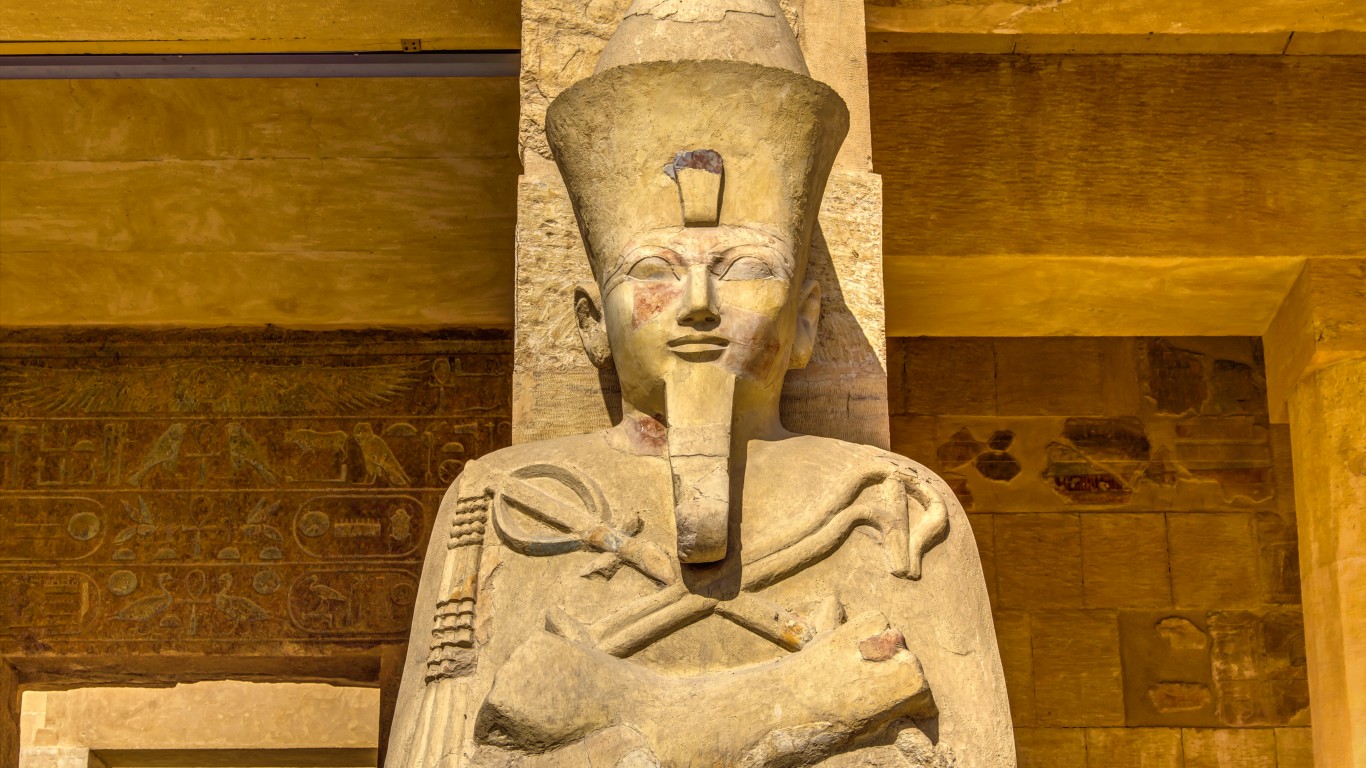
Hatshepsut
> Ruled over: Egypt
> Reign: 1479-1458 B.C.
The second officially accepted female pharaoh, Hatshepsut ruled Egypt for 21 years, during which she improved trade routes and relations and oversaw extensive building projects including temples, monuments, and her own tomb complex. Her stepson and successor, Thutmose III, attempted to erase her reign from history. During his years as pharaoh, her image was chiseled off cartouches and many of her statues were destroyed, but the attempts were unsuccessful.

Nefertiti
> Ruled over: Egypt
> Reign: 1353-1336 B.C.
Ruling as queen alongside her husband, Pharaoh Akhenaten, Nefertiti brought a religious revolution to Egypt by worshiping a singular sun god, Aten. Upon Akhenaten’s death, it is theorized that Nefertiti became pharaoh under the name Neferneferuaten, before her stepson Tutankhamun ascended the throne.
[in-text-ad-2]
Sammu-ramat
> Ruled over: Assyria
> Reign: 811-808 B.C.
Wife of King Shamshi-Adad V, Sammu-ramat held a brief reign as regent of Assyria before her son came of age and ascended the throne. She is credited with stabilizing the empire after a civil war. Multiple monuments and inscriptions attesting her rule have been found, and her name, which is mentioned in the writings of Herodotus, among other historians, has reached legendary status.

Tomyris, Queen of the Massagetae
> Ruled over: Parts of Central Asia
> Reign: 6th century B.C.
The Massagetae were a confederation of nomadic Iranian peoples who inhabited the great plains east of the Caspian Sea. Tomyris was a warrior queen, famous for defeating Cyrus the Great, founder of the First Persian Empire, as he attempted to invade her lands. According to Herodotus, Tomyris obtained Cyrus’s head after the fatal battle and dipped it into a vat of blood, declaring that she had thus quenched his thirst for human blood.
[in-text-ad]

Artemisia I
> Ruled over: Halicarnassus
> Reign: 484-460 B.C.
Artemisia was a warrior queen of Halicarnassus, a Greco-Carian city in Anatolia. During her 24-year reign, she fought alongside Xerxes, the King of Persia, in multiple naval battles against Greece and became known for her skill as a tactician and leader. As the battle of Salamis ended, was able to elude an Athenian ship by taking down her Persian flag.

Olympias
> Ruled over: Macedonia
> Reign: 357-316 B.C.
Olympias was queen consort to Phillip II, King of Macedonia, and the mother of Alexander the Great. She was also a member of the snake-worshipping cult of Dionysus. During the height of her son’s power, she had significant sway on Macedonian politics. After Alexander’s death, she went to great and violent lengths to ensure that his son would be king, allegedly killing Phillip’s alternate heir as well as other prospects to the throne and hundreds of their followers.
Cleopatra Thea
> Ruled over: Syria
> Reign: 126-121 B.C.
Cleopatra Thea was queen consort of Syria for nearly 25 years, as the wife of three monarchs, before finally becoming the ruler as regent for her son. Her reign was rife with tumult, war, and murder. She went to great lengths to maintain her power, including killing one of her own sons who attempted to claim the throne. In a twist of fate, she was killed while trying to murder another of her sons, who forced her to drink the poisoned wine she had offered to him.
[in-text-ad-2]
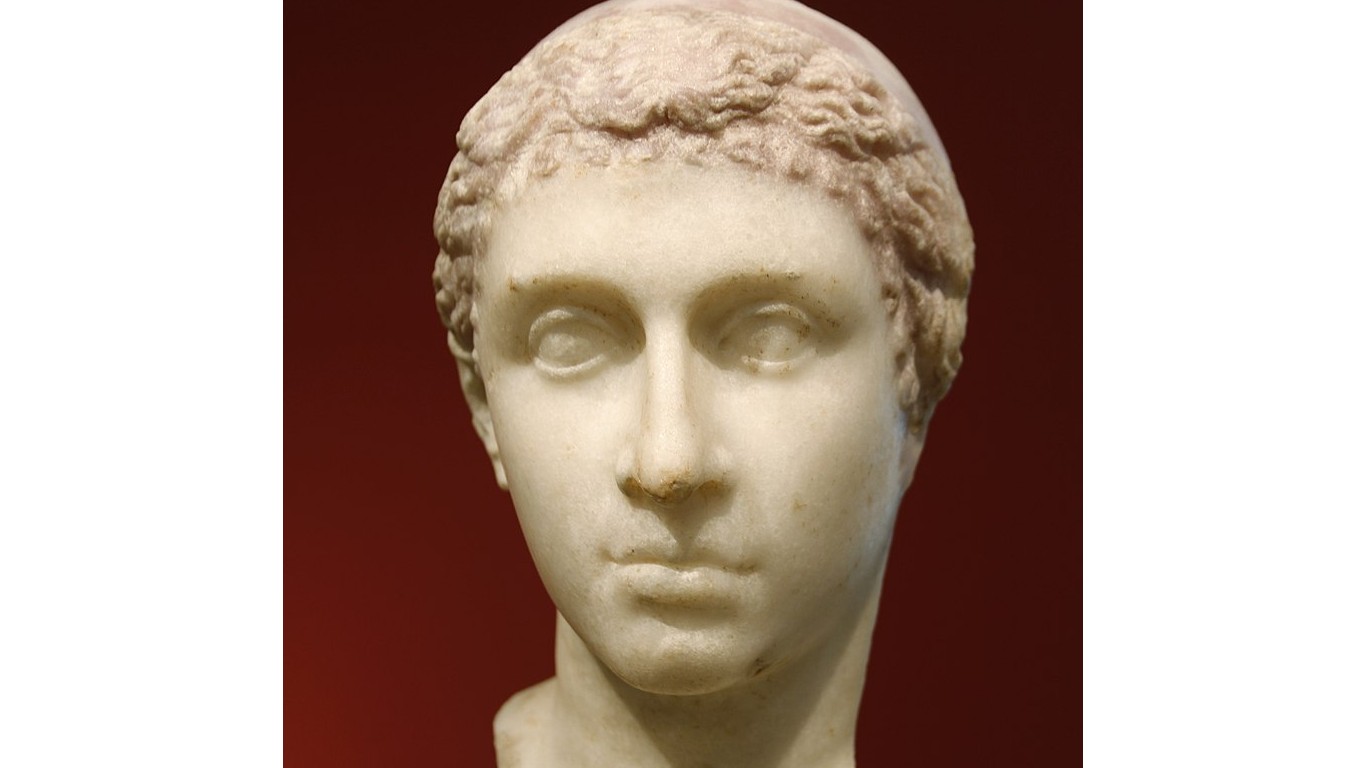
Cleopatra
> Ruled over: Egypt
> Reign: 51-30 B.C.
The last true pharaoh of Egypt, Cleopatra was an accomplished linguist, author, and naval commander who ruled the Ptolemaic Kingdom as co-regent with multiple brothers, and then with her son. She formed alliances with two powerful Roman politicians — Julius Caesar and Mark Antony — to maintain her stronghold over Egypt. Cleopatra famously committed suiсide after the death of Mark Antony and a naval defeat in a battle against Rome.

Cartimandua, Queen of the Brigantes
> Ruled over: Part of northern England
> Reign: 43-69
Cartimandua ruled a section of what is now northern England as queen of a Celtic people known as the Brigantes during the Roman conquest of the area. She and her husband Venutius showed loyalty to Rome to maintain their power, even betraying another British ruler by delivering him to the Romans in chains. They eventually divorced, causing a civil war in which she enlisted Roman forces to quell the rebellion. Unfortunately for Cartimandua, Venutius struck back a decade later and defeated her in battle.
[in-text-ad]
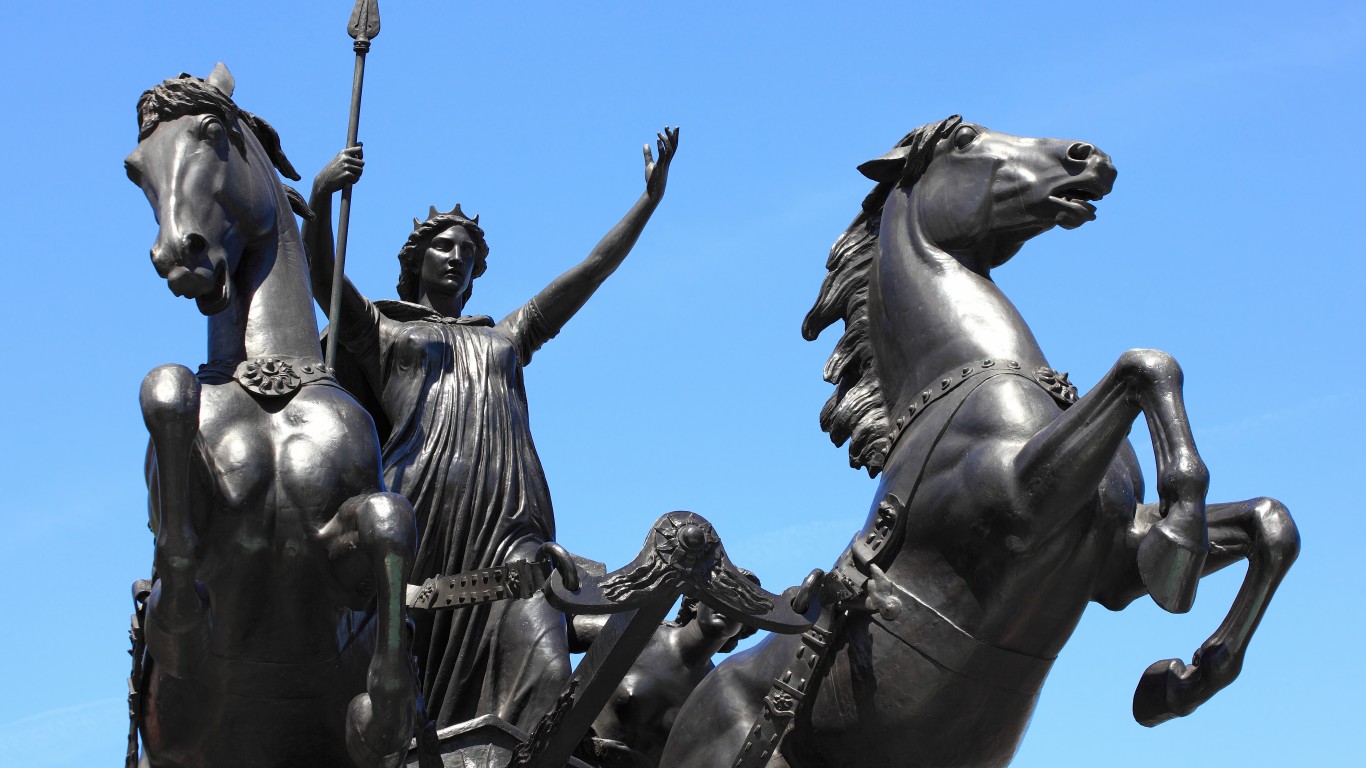
Boudica, Queen of the Iceni
> Ruled over: Part of southern England
> Reign:48-60
Boudica became queen of the Celtic Iceni tribe at age 18 when she married King Prasutagas. When Prasutagus died and Roman forces annexed his kingdom, Boudica formed an army of Iceni and other Celts and staged a revolt, destroying three cities that were under Roman control. According to some sources, In one final battle, seeing that her army was losing, Boudica poisoned herself to avoid being captured.
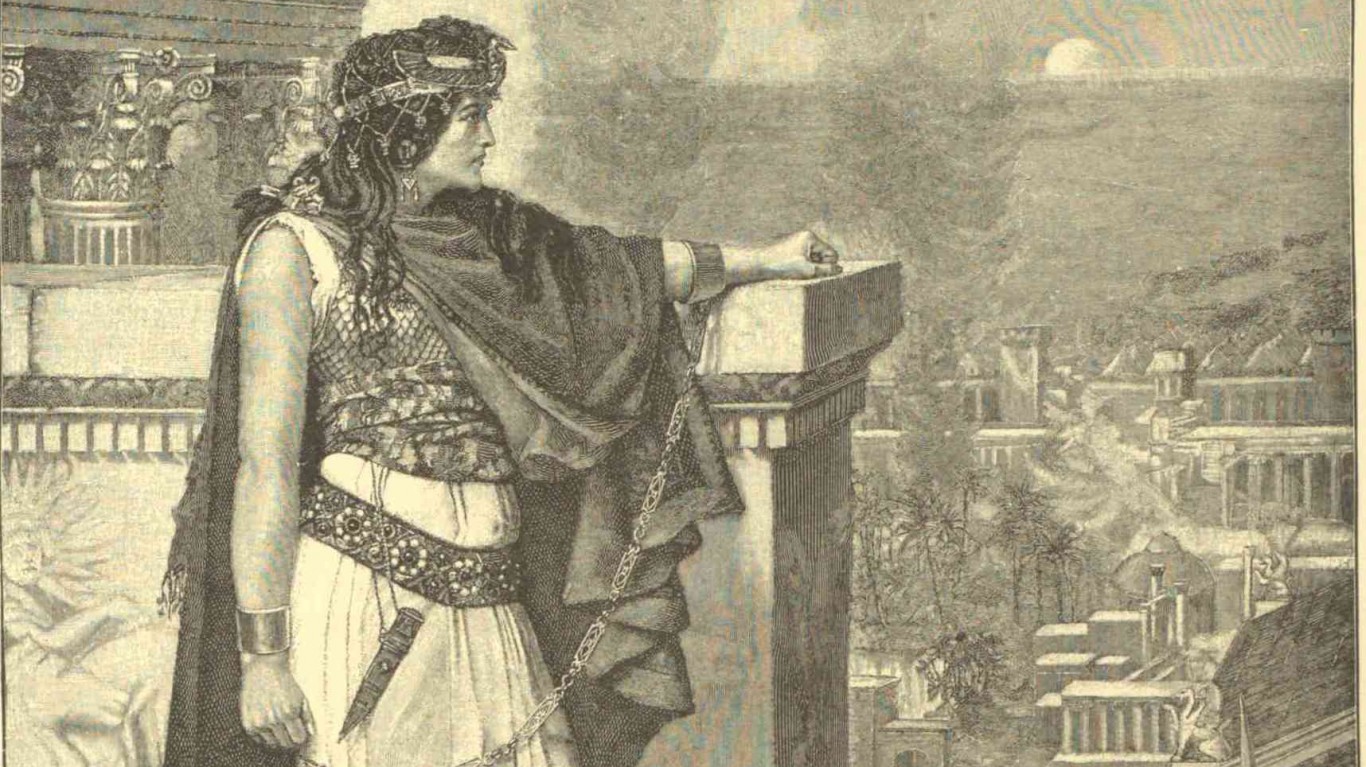
Zenobia
> Ruled over: Palmyra
> Reign: 267-272
Zenobia was a warrior queen of the Palmyrene Empire. When her husband, King Odaenathus, was assassinated, she became regent for her son and de facto ruler. During her reign, Zenobia invaded and conquered multiple Eastern Roman provinces and annexed Egypt. Although she was eventually captured and exiled by the Romans, she is remembered as a powerful and tolerant ruler who respected the cultures and religions of her subjects.
Empress Theodora
> Ruled over: Byzantine Empire
> Reign: 527-548
As wife of Emperor Justinian, Theodora greatly influenced Byzantine politics, writing legislation and meeting with foreign rulers. She is remembered for her advocacy for women’s rights, as she helped passed laws prohibiting rаpe and the sеx trafficking of young girls, as well as legislation to grant women greater power in marriage and divorce.
[in-text-ad-2]
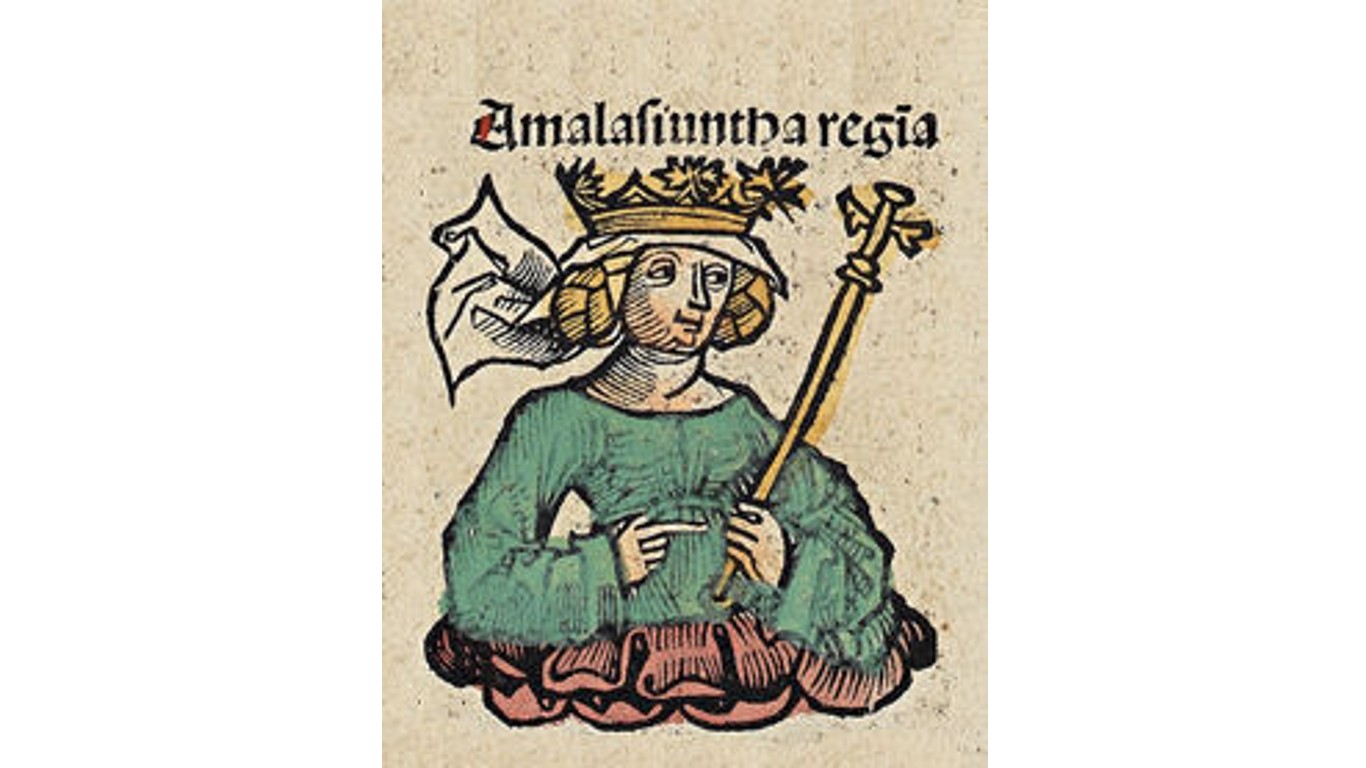
Amalasuntha, Queen of the Ostrogoths
> Ruled over: Parts of northern Italy
> Reign: 534-535
Amalasuntha ruled the Ostrogoths in Northern Italy as a pro-Roman regent for her son and then as queen regnant upon her son’s death. During her reign she forged an alliance with the Byzantine emperor Justinian I, and became known for her intellect and proclivities toward philosophy and literature. When she attempted to share power with her cousin, a powerful military leader named Theodahad, he had her imprisoned and murdered.

Empress Suiko
> Ruled over: Japan
> Reign: 593-628
Suiko was the 33rd monarch and the first empress of Japan in recorded history. Before Suiko came to power, she had taken vows as a Buddhist nun, and during her reign Buddhism was officially recognized and promoted. During her 35 years in power, she helped to enact Japan’s first constitution, the Chinese calendar, and a new bureaucratic system.
[in-text-ad]

Empress Wu Zetian
> Ruled over: China
> Reign: 690-705
Prior to becoming Empress of China, Wu Zetian ruled the Tang dynasty from 665-690 as empress consort to her husband, Emperor Gaozong, and then as regent for her two sons. Upon her coronation she became the first female sovereign of China. During her reign, the Chinese empire expanded substantially and government support for Taoism, Buddhism, and education grew.
Olga of Kiev
> Ruled over: Russia
> Reign: 945-960
Olga of Kiev was queen regent of a tribal federation in Eastern Europe called Kievan Rus’ for 15 years until her son came of age. She is known for the cruel vengeance she took on the Drevlian tribe who murdered her husband, as well as her establishment of trade centers and centralized rule. Olga became the first Russian saint in the Eastern Orthodox church for her promotion of Christianity.
Eleanor of Aquitaine
> Ruled over: France
> Reign: 1137-1204
Eleanor, the Duchess of Aquitaine in southwestern France for seven decades, was one of the most powerful women of her time. She became Queen of France after marrying Louis VII and then, after that union was annulled, Queen of England after marrying Henry II. Eleanor led military campaigns in the Second Crusade and is remembered as being a capable leader and a patron of the arts.
[in-text-ad-2]

Mary I
> Ruled over: England
> Reign: 1553-1558
The first female monarch of England, Mary Tudor is best known for her persecution of Protestants and other religious dissenters, as she attempted to reverse the effects of the English Reformation that her father, Henry VIII, had started. During her short reign, she had hundreds of people burned at the stake.
Elizabeth I
> Ruled over: England
> Reign: 1558-1603
Half-sister to Mary I, Elizabeth I ruled England for nearly 45 years, during which she established the English Protestant Church while also refusing to persecute in the name of religion. She is known for maintaining peace in a previously divided England, as well as supporting arts and theatre, and for never marrying, despite having multiple suitors.
[in-text-ad]
Maria Theresa
> Ruled over: Habsburg Empire
> Reign: 1740-1780
The only female ruler of the Habsburg Empire, Maria Theresa of Austria fought hard to be accepted as ruler. She prevented her husband Francis — the Holy Roman Emperor and Archduke of Austria — from making political decisions, and instead strengthened her empire with the help of her advisers. She is remembered for improving Austria’s political standing by instituting financial, educational, and military reforms.

Catherine the Great
> Ruled over: Russia
> Reign: 1762-1796
Born a Prussian princess, Catherine became Empress of Russia during a coup that ousted her husband, Tsar Peter. She ruled for 34 years, during which time she quelled over a dozen uprisings; expanded and modernized Russia; drafted legal, judicial, and educational reforms; and founded a government-funded school for women.
Isabella I
> Ruled over: Kingdoms of Castile and Aragon
> Reign: 1474-1504
Isabella assumed the throne of the Kingdom of Castile (incorporating León) in 1474. Five years later, when her husband (and second cousin) Ferdinand became King of Aragon, the two became joint rulers of the two kingdoms together — setting the stage for the formation of modern Spain. A staunch Roman Catholic, Isabella, with her husband, expelled both Jews and Muslims from Spain and initiated the Spanish Inquisition. Although she sponsored Christopher Columbus’s voyage to the Americas, she opposed slavery and insisted that the indigenous peoples be treated with dignity
[in-text-ad-2]
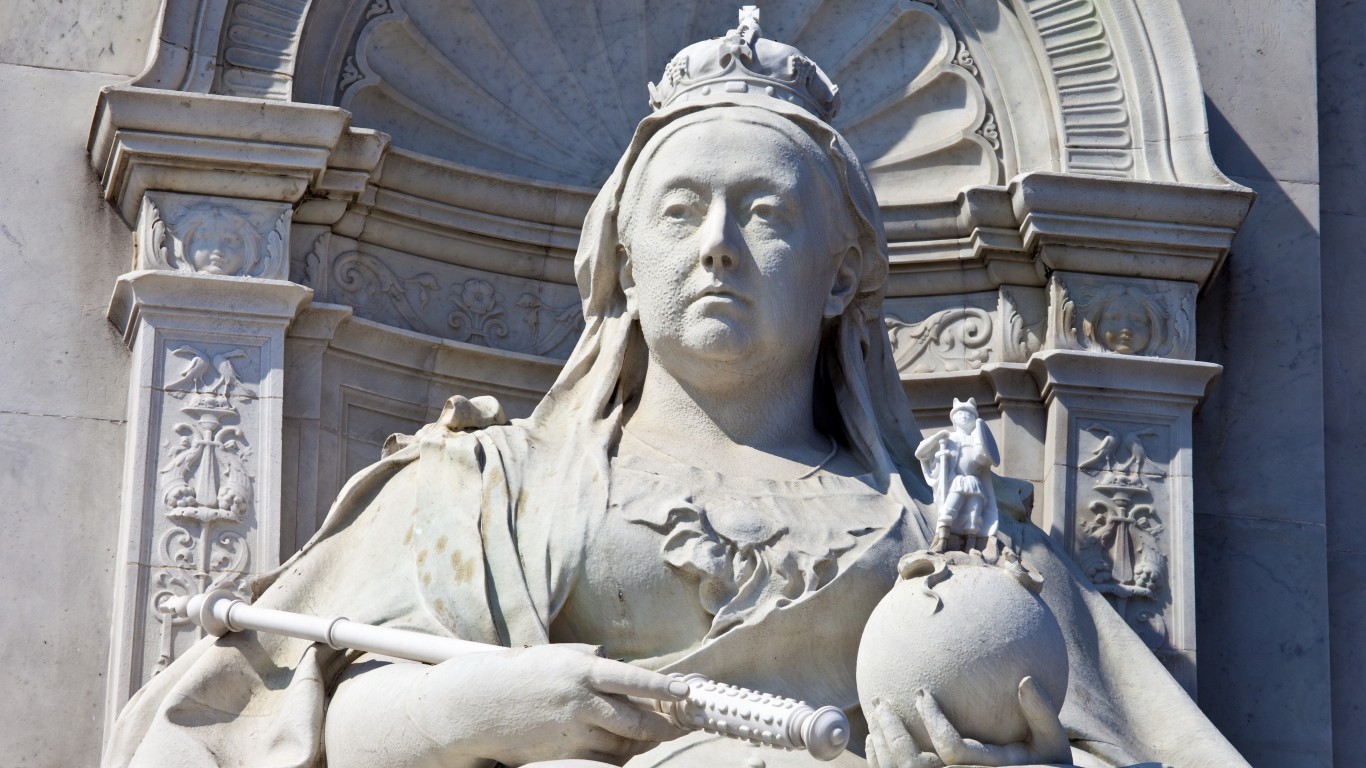
Queen Victoria
> Ruled over: England
> Reign: 1837-1901
Victoria became Queen of England at a time when the British empire was reaching its height. A conservative ruler with strong personal morals, Victoria is remembered for presiding over England during great cultural and industrial change, including the abolition of slavery in the British Empire and expansion of workers rights.

Empress Dowager Cixi
> Ruled over: China
> Reign: 1861-1908
Although she was one of many concubines to the Xianfeng Emperor, Cixi was the only one who gave birth to a son. Upon the emperor’s death, she seized power as her son’s regent and effectively ruled China for the next 47 years, a time of great cultural upheaval. Cixi is remembered for stopping multiple rebellions and attempting to restore tradition and order to the Chinese government while allowing for military, diplomatic, and technological advancement.
Travel Cards Are Getting Too Good To Ignore (sponsored)
Credit card companies are pulling out all the stops, with the issuers are offering insane travel rewards and perks.
We’re talking huge sign-up bonuses, points on every purchase, and benefits like lounge access, travel credits, and free hotel nights. For travelers, these rewards can add up to thousands of dollars in flights, upgrades, and luxury experiences every year.
It’s like getting paid to travel — and it’s available to qualified borrowers who know where to look.
We’ve rounded up some of the best travel credit cards on the market. Click here to see the list. Don’t miss these offers — they won’t be this good forever.
Thank you for reading! Have some feedback for us?
Contact the 24/7 Wall St. editorial team.
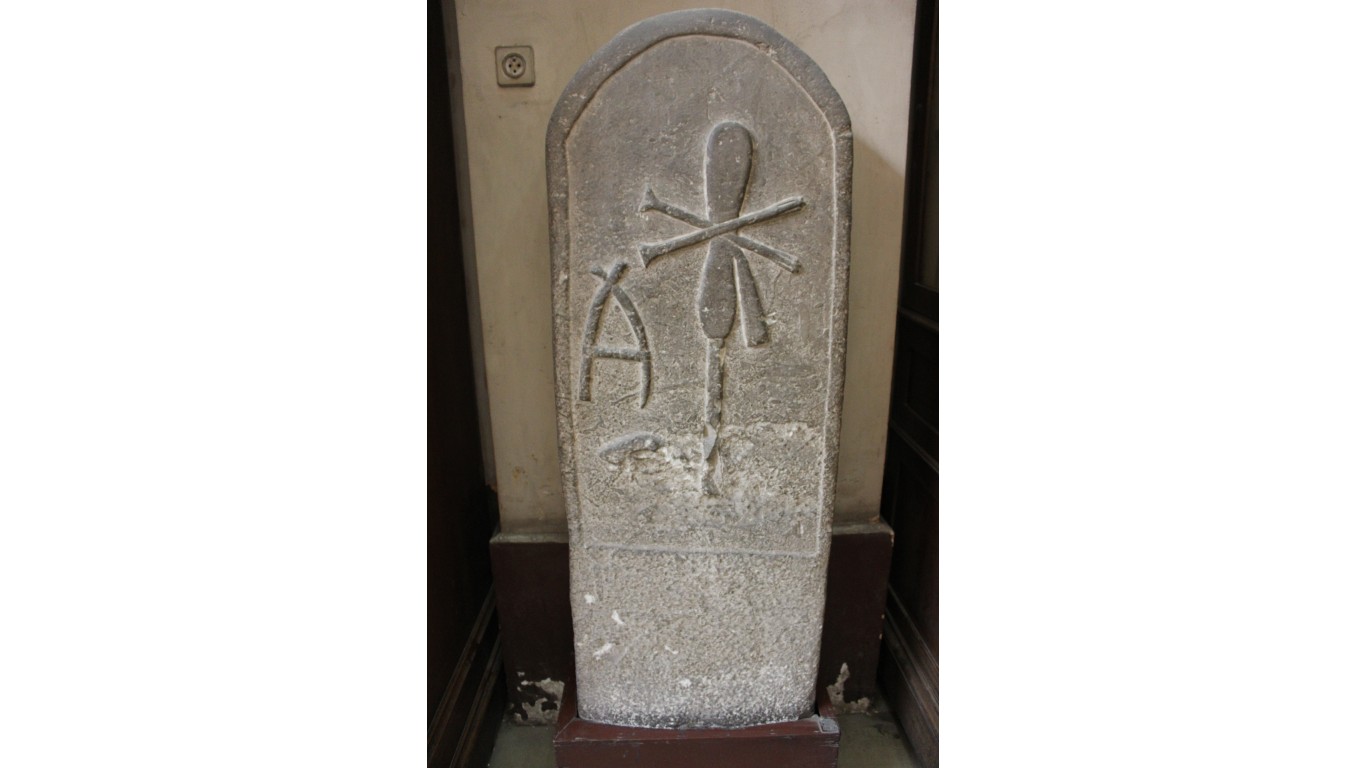
 24/7 Wall St.
24/7 Wall St.
